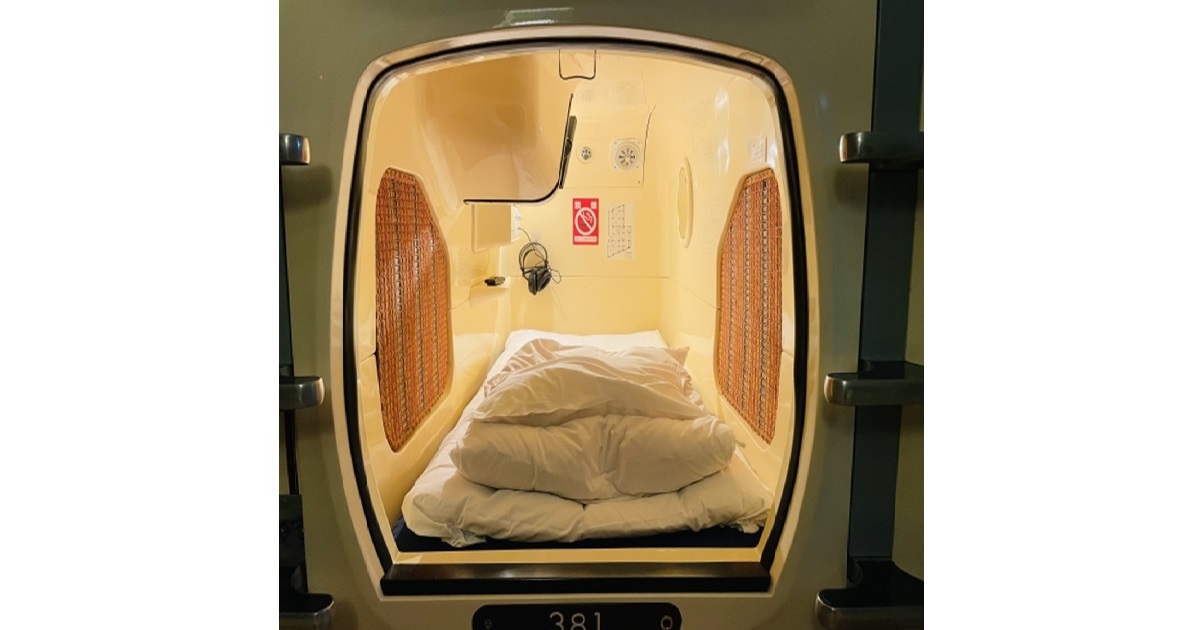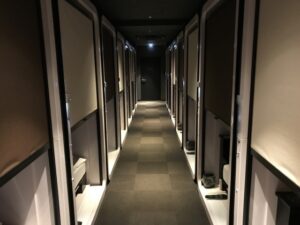Stepping into a Japanese capsule hotel feels like boarding a spaceship destined for the future.
Rows of neatly stacked sleeping pods, minimalist design, and an atmosphere of quiet efficiency—it’s an experience unlike any other accommodation in the world.
But for first-timers, it can also be a bit intimidating.
Where do I put my shoes?
Can I eat in my capsule?
What are the rules for the public bath?
Fear not, space traveler.
This ultimate survival guide will walk you through everything you need to know to conquer Japan’s capsule hotels with confidence.
Why You Should Try a Capsule Hotel
Beyond the novelty, there are solid reasons to choose a capsule hotel for your stay.
- Affordable: They are often significantly cheaper than standard business hotels, making them a perfect choice for budget travelers.
- Convenient Locations: You’ll find most capsule hotels located just minutes away from major train stations, which is perfect for exploring the city.
- Clean and Well-Equipped: Japanese capsule hotels are known for their cleanliness. Amenities like towels, pajamas (samue or yukata), and toiletries are almost always provided.
Things to Be Aware Of
Of course, this unique style of lodging comes with its own set of challenges.
- Noise: While most guests are respectful, you’re sharing a large room with many people. Snoring, alarms, and rustling can be an issue. Light sleepers should definitely bring earplugs.
- Lack of Privacy: Your only private space is your capsule, which usually closes with a screen or curtain, not a locking door.
- Luggage Storage: Large suitcases usually need to be stored in a separate luggage area or at the front desk. It’s a good idea to pack what you need for the night in a smaller bag. For more tips on what to do with your large bags, check out our guide to using coin lockers.
Your Step-by-Step Survival Guide
Ready to check in?
Here’s how it works.
Step 1: Booking Your Pod
Booking a capsule hotel is easy.
You can use major booking sites.
Many modern capsule hotels are very popular, so booking in advance is highly recommended, especially on weekends.
Step 2: Check-In & The Shoe Locker
When you enter, the first thing you’ll see is a wall of shoe lockers.
Take off your shoes, store them in a locker, and bring the key to the front desk.
You will not wear your outdoor shoes inside the hotel.
Step 3: Getting Your Locker Key
At the front desk, you’ll exchange your shoe locker key for a larger locker key.
This locker is for your luggage and personal belongings.
Your locker number will usually match your capsule number.
Step 4: Change into Your “Samue”
Inside your locker, you’ll find a set of comfortable loungewear, often a “samue” or “yukata,” and towels.
Change into this loungewear.
It’s perfectly acceptable to walk around the entire hotel, including the lounge and dining areas, in this attire.
Step 5: Using the Communal Bath (Sento)
Most capsule hotels have a large communal bath, or “sento.”
Remember to wash your body thoroughly at the washing stations before entering the main bath tubs.
For a detailed guide on etiquette, check out our step-by-step guide to public bathhouses.
Step 6: Respect the Silence in the Capsule Area
The capsule floor is a quiet zone.
Do not talk on your phone.
Set your phone to silent.
If you want to watch videos, use headphones.
Eating and drinking inside the capsule is also generally forbidden.
A Note for Female Travelers
While many traditional capsule hotels were for men only, the industry has changed dramatically.
Today, there are many capsule hotels with female-only floors or even entire hotels dedicated exclusively to women.
These areas are accessed with a special key card, ensuring safety and privacy.
You Might Also Like
If you’re looking for other unique and budget-friendly ways to get around Japan, consider overnight travel on a highway bus.
It’s a great way to save on both transportation and accommodation costs.







